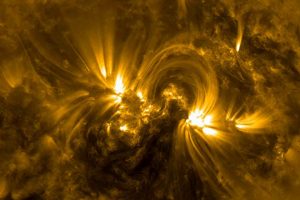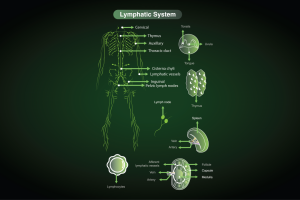
Munazza Alam, USA
It is an undeniable fact that the Holy Qur’an is the divine scripture that has most emphasised reflecting upon the universe. No other divine scripture stresses the importance of studying the universe as explicitly as the Holy Qur’an. The Ahmadi Muslim Nobel Laureate Dr Abdus Salam once stated: ‘some 750 verses of the Holy Qu’ran — almost one-eighth of it — exhort the believers to study Nature — to reflect, to make the best use of reason and to make the scientific enterprise an integral part of the community’s life’. Among these verses, dozens relate to celestial bodies and astronomical phenomena.
Revealed 1400 years ago to the Holy Prophet Muhammad (sa) in Arabia, at a time when scientific understanding was limited, the Holy Qur’an repeatedly draws our attention towards the origin of the Universe, the orbits of the sun, the moon and the planets, and the numerous stars — and states that if one ponders upon any of them, it will undoubtedly point toward the existence of One Creator. Each phenomenon in the Universe reveals the Hand of God and presents a story worth telling. One such story is the story of a star.
Allah the Exalted proclaims in chapter 16, verse 13 of the Holy Quran,
‘…and the stars too have been pressed into service by His command. Surely, in that are Signs for a people who make use of their reason.’
In this verse of the Holy Qur’an, Allah uses the expression ‘musakhar’ meaning that the stars have been ‘pressed into service’, which means that the benefits we receive from stars are entirely through Allah’s Grace and their bounties exist without any effort on our part.

All the atoms that make up everything here on Earth originated in the cores of stars billions of years ago. The oxygen you are breathing right now, the iron in your blood that makes it red, the potassium in the banana that you ate for breakfast, the calcium in your bones, the silicon in your cell phone and computers – these elements were all forged within the depths of massive stars. Their spectacular life cycles are the reason that we have access to this atomic inventory. Everything that we see and touch and know is connected by this atomic origin – and it all begins inside a star.
Stars are giant burning balls of gas, primarily made of hydrogen and helium. A star forms from a cloud of gas and dust that, for some reason, collapsed in on itself. The cloud will continue to collapse and compress until it becomes so hot and dense that hydrogen atoms deep in the core of the star (where there are high temperatures and pressures) start to smash into each other in a process called nuclear fusion.
Nuclear fusion reactions are the powerhouse of the star, releasing energy that allows the star to remain bright and hot. These reactions fuse together lighter elements to make heavier ones. The process starts with the fusion of hydrogen and helium, the two lightest and simplest elements that were created in just the first two minutes of the Big Bang. Hydrogen has one proton, and two hydrogen atoms can fuse together to make helium which has two protons. Hydrogen and helium can fuse together to form lithium, which has three protons.
For stars that are about 5-10 times the mass of the Sun, this process continues so we get beryllium and boron and carbon and so on, creating bigger and heavier elements. Through this process, stars manufacture every atom in the universe (aside from the original hydrogen and helium from the Big Bang). Fusion continues to form the elements of the periodic table – until we get to iron. Iron is the heaviest element in the interiors of stars because its nucleus is so tightly bound that energy cannot be released by fusing iron. When the entire core of the star is made up of iron, the star has run out of fuel to keep it burning bright and hot. The iron core then collapses and becomes extremely dense until it cannot collapse anymore. Then within a fraction of a second, all the material of the star bounces off the core and is ejected into space in a fantastic supernova explosion.
In this supernova, all the heavy elements that the star created are released from the core and the energy of this explosion can produce elements heavier than iron (like gold, uranium, and platinum) – all of which enrich the atomic inventory of the universe.
But the end of a star’s lifetime, in some ways, is just the beginning. From these extreme explosions, atoms are blasted into empty space as space dust. And the movements of the other stars in the galaxy can sweep up some of these atoms and assemble clouds of gas and dust elsewhere. Such a cloud can later collapse in on itself in a process that forms new stars and planets – including planets like Earth. It is the death of stars that provides the material to form new ones. This cosmic recycling of atoms in the universe is what connects everything — from the astronomical level to the molecular level, from cosmic history to human history. The atoms that make up the sun, the moon, the Earth, and even us were created from the original hydrogen and helium of the Big Bang.

The billions of atoms in your own body can be traced back to a stellar explosion in the Milky Way billions of years ago. So, this is not just the story of a star, this is also the story of us and where we came from. The death of stars gives rise to our lives. As the famous astronomer Carl Sagan said, ‘You are made of starstuff’. In the Milky Way, two massive stars will go supernova over the course of a century. In the universe, a supernova explosion is occurring about every second. This process is basically happening all the time. Pondering over this process, we realise the profound truth that every object is connected by this atomic origin. But as Allah states in the same verse of the Holy Qur’an, these…
‘are Signs for people who make use of their reason’ [1].
For them these signs shine brighter than even the greatest stars in the universe and point directly towards the Unity of God. As the Promised Messiah (as) beautifully summarises in his Urdu poem:
ہے عجب جلوہ تیری قدرت کا پیارے ہر طرف جس طرف دیکھیں وہی رہ ہے ترے دیدار کا چشمہ خورشید میں موجیں تری مشہود ہیں۔ ہر ستارے میں تماشہ ہے تری چمکار کا
“What show of Thy splendour is all around, My Dear,
Wherever we look, that way leads to Thy View!
Thy grandeur is witnessed in the light of the sun
Thy dazzle is displayed in every star.” [2]
About The Author: Munazza Alam is an astronomer, National Geographic Young Explorer, and postdoctoral researcher at the Carnegie Earth & Planets Laboratory in Washington, DC. She also serves as a Deputy Editor for the Science Section in The Review of Religions.
ENDNOTES:
[1] The Holy Qur’an 16:13
[2] Durre Sameen. PRAISE TO THE LORD OF THE WORLDS – Hamd Rabul-Aalameen. Surma Chashm Arya, page 4, 1886




Add Comment